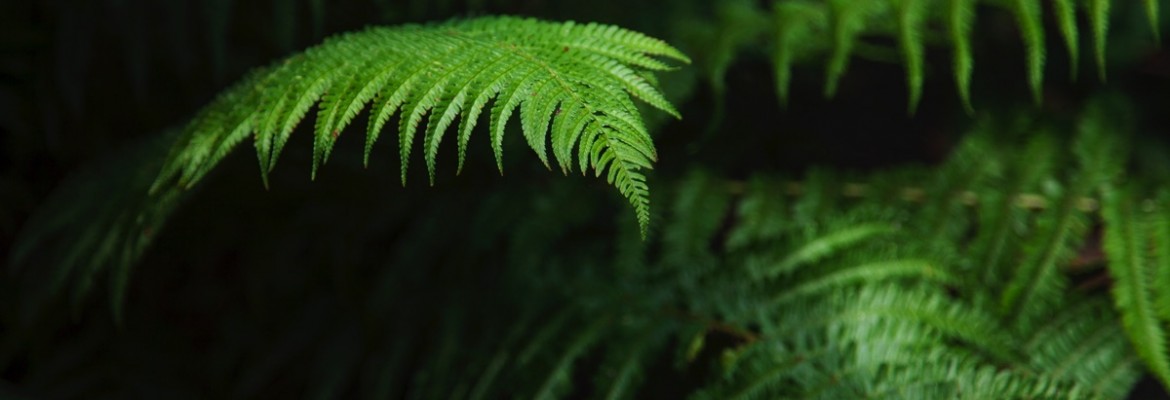My love affair with ferns began when I was twelve. I was on a Boy Scout camping holiday in South Wales. Our leader, a young man who’d have been in serious violation of present-day PC doctrines about protection and responsibility for the young, had committed us all to scrambling along the base of the cliffs keeping just above the rising tide. It was exhilarating stuff, with no guarantee of a feasible way up the rocks if we reached an impasse – which was exactly what happened. While searching for an escape route I noticed unusual plants on a ledge below me. I felt sure they were something I’d seen pictures of in a book: Royal Ferns (Osmunda regalis). I just had to have one! At some risk I slithered down to the ledge and grubbed one up. Together with an assortment of Hartstongue, Polypody and Softshield ferns it went back home with me as the start of a new passion – a fern collection. Home was in a greenbelt town just north of London. In the early 1950s, before the widespread use of insecticides, local ponds and ditches were home to numerous frogs, newts, snakes and lizards, and I had a few captive grass snakes housed in a rusty hundred-gallon water-tank in our garden. My new ferns (‘exotic’ compared with local varieties) were planted in the tank, as an attempt to make the snakes ‘feel at home’ - my first ‘Jurassic Park’.

Throughout most of my working life as missionary, schoolteacher and university professor ferns were always there, though necessarily backgrounded by more pressing concerns. However, the old love re-emerged from the shadows when I retired in 2001. An opportunity came to buy a small but prestigious nursery specialising in ferns. The entire operation had to be shifted to my present home area in North Wales, and a nursery site had to be established on an old hill-farm with ten acres of rough mountainside attached to it. It was highly challenging, immensely satisfying, and I was knee-deep in ferns all day every day. Displays for annual events such as the Chelsea Flower Show had to be mounted. Advice on fern plantings for the gardens of stately homes (as well as for more modest ones) had to be dispensed. Thousands of small ‘plugs’ had to be grown on to saleable size – watering and potting on is a never-ending commitment to a plant until it sells. Each year a container-load of Australian dry tree-fern ‘trunks’ arrived to be soaked and resurrected for sale to UK gardeners. Packaging mail-orders, organizing nationwide delivery for tree-ferns (too big for the postal service), and trying to keep on top of the paperwork entailed by everything else developed in me a profound respect for small farmers and proprietors of small businesses.
The highlight of my year was the ‘collecting trip’. It became – and remains – my conviction that the variety of ferns available to the gardening public needed serious expansion. While acknowledging that not all of the 12,000 species of fern found on Earth would be reliably hardy in Western European gardens, there are probably hundreds more that could be; they have just never been tried. The collecting trips (in Taiwan, Chile, South Africa, Macaronesia and Sarawak) were to identify attractive potentials and bring back spore for trial. I must make honest confession though. Those trips never had only a business motivation; they provided a justifiable cover-up for indulging a personal passion for getting into jungle and mountain country.
In 2007 I sold the nursery on and tried retirement again. It hasn’t worked. Collecting and propagating ferns is seriously addictive, and I’m still at it. And now in conjunction with the advanced propagation skills and purpose-built facilities of VitroPlus, available and willing to try out new candidates, there are proper grounds for expecting to share exciting new fern varieties with the gardening world.
Choice about whom or what we fall in love with is never open to rational explanation. Why ferns? That’s a question I can’t answer; but perhaps some of you understand. I’ve enjoyed flirtations with bamboos, palms, agaves and others, but they didn’t last. I’m now heading into my eightieth year and reckoning on monogamy!
by Dick Hayward – as a fern collector he is bringing SRT Ferns new and exciting fern varieties to inspire fern lovers.
[1] British common names for: Asplenium scolopendrium, Polypodium vulgare and Polystichum setiferum respectively.
back
